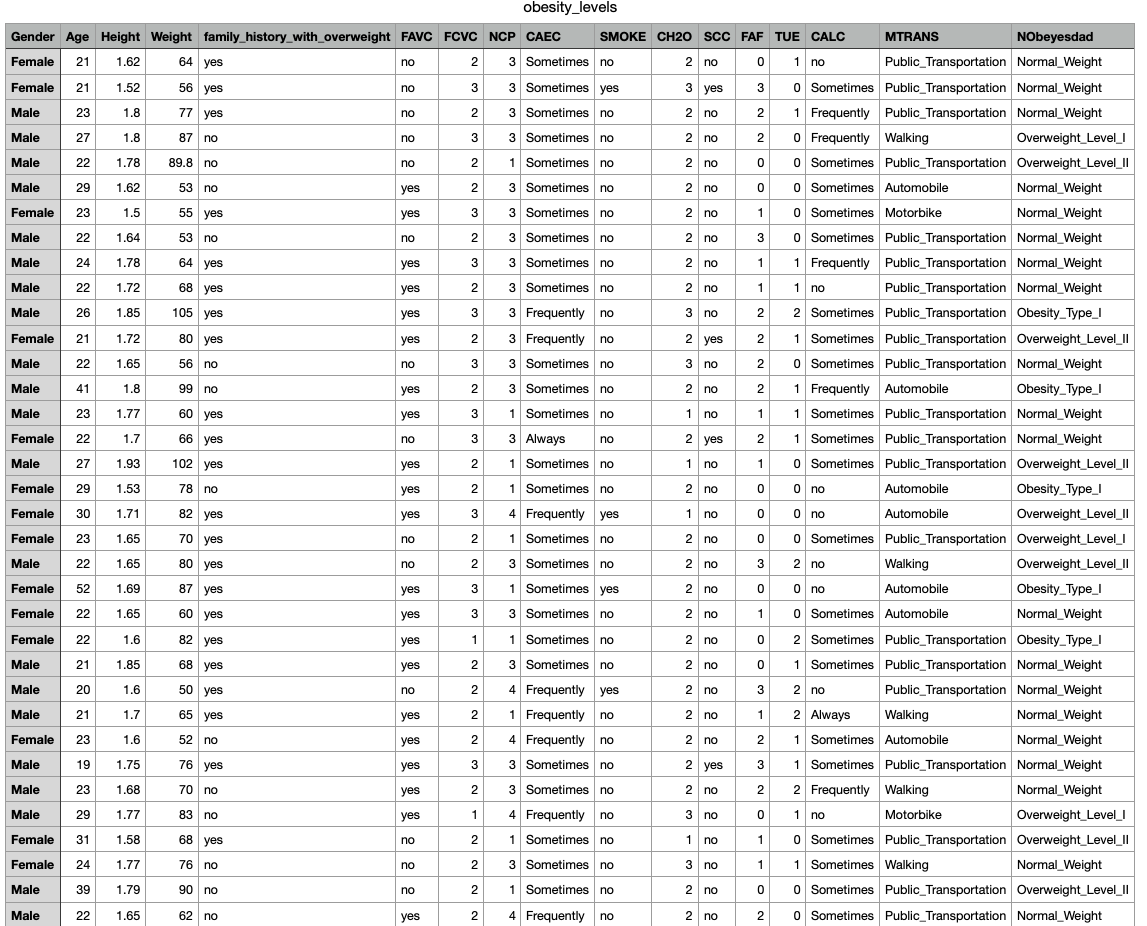Question
Backgroud: Obesity has become a global epidemic that has doubled since 1980, with serious consequences for health in children, teenagers, and adults. Obesity levels in
Backgroud:
Obesity has become a global epidemic that has doubled since 1980, with serious consequences for health in children, teenagers, and adults. Obesity levels in individuals may relate to their eating habits and physical condition. In this assessment, you will be analysing and creating ML models based on a given dataset that contains attributes of individuals with relation to obesity levels.
Dataset filename: obesity_levels.csv
Dataset description: This dataset include data for the estimation of obesity levels in individuals based on their
eating habits and physical condition. The data contains 17 attributes and 2111 records.
Features and labels: The attribute names are listed below. The description of the attributes can be found in this article (web-link).
- Gender
- Age
- Height
- Weight
- family_history_with_overweight (family history of overweight)
- FAVC (frequent high caloric food)
- FCVC (vegetables per meal)
- NCP (number of main meals per day)
- CAEC (any food between meals)
- SMOKE (smoking)
- CH2O (daily water intake)
- SCC (daily consumed calories)
- FAF (frequency of physical activity)
- TUE (technology usage)
- CALC (consumption of alcohol)
- MTRANS (means of transport)
- NObeyesdad (obesity levels, i.e. Insufficient Weight, Normal Weight, Overweight Level I, Overweight Level II, Obesity Type I, Obesity Type II and Obesity Type III)
_____________________________________________________________________________________
Questions
_____________________________________________________________________________________
- Create a machine learning (ML) model for predicting "weight" using all features except "NObeyesdad" and report observed performance. Explain your results based on following criteria:
- What model have you selected for solving this problem and why?
- Have you made any assumption for the target variable? If so, then why?
- What have you done with text variables? Explain.
- Have you optimised any model parameters? What is the benefit of this action?
- Have you applied any step for handling overfitting or underfitting issue? What is that?
2.Create a ML model for classifying subjects into two classes applying following constraints on above dataset. 12 marks
- Use "NObeyesdad" as target variable and rest of them as predictor variables.
- drop samples with value "Insufficient Weight" for "NObeyesdad"
- Group Normal Weight, Overweight Level I, and Overweight Level II into a class, and the other three labels (Obesity Type I, II, III) as the other class.
- Report classification performance scores. Select scores that you think best for describing the model performance with appropriate justification.
- Have you taken any step to check generalisability of the model? What is that and how it ensures generalisability.
- Can you design and develop any other model for solving this problem? If so, then why have you used the reported one? Give your justification.
3.Suppose that a company has a number (>=500) of resorts around the globe. 8 marks
- Identify a list of features (>=5) that can be used to describe these resorts.
- Create a dataset (rows>=500) and explain all variables. You can generate data either synthetically
- or collecting from similar datasets. Submit your created dataset. In addition, please provide links
- in case you have collected the dataset.
- Build a ML model that can help a customer to select appropriate set of resorts based on the
- season of travel. Present and describe the performance of your model.
- Why do we need a ML model for this problem?
data: https://github.com/lifestim/files
Using AgglomerativeClustering unsupervised ML algorithms only
?

Step by Step Solution
There are 3 Steps involved in it
Step: 1

Get Instant Access to Expert-Tailored Solutions
See step-by-step solutions with expert insights and AI powered tools for academic success
Step: 2

Step: 3

Ace Your Homework with AI
Get the answers you need in no time with our AI-driven, step-by-step assistance
Get Started


